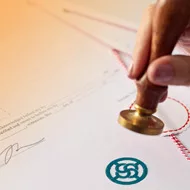 Becoming certified as a woman-owned business has many benefits—namely access to a $200 billion government contracting market. That’s right, federal, state and local government agencies around the nation are required to allocate a percentage of their purchasing contracts to women-owned businesses. Beyond the government market, countless corporations are diversifying their brands by doing business with reliable women-owned businesses.
Becoming certified as a woman-owned business has many benefits—namely access to a $200 billion government contracting market. That’s right, federal, state and local government agencies around the nation are required to allocate a percentage of their purchasing contracts to women-owned businesses. Beyond the government market, countless corporations are diversifying their brands by doing business with reliable women-owned businesses.
With so much to gain, why not take a few moments to see if becoming certified as a woman-owned business is right for you? Here’s a step-by-step checklist to see if you qualify, and how to get started.
To qualify as a Woman Owned Small Business (WOSB), a business must meet the following requirements (as provided by the National Women’s Business Council)
- Meet small business size standard for primary NAICS code and contract—your business must be small as defined by the Code of Federal Regulations (CFR) Title 13 Part 121.105(a). Regulations provide that a business must be organized for profit; primarily operate in the U.S.; and have a place of business in the U.S. and make a significant contribution to the U.S. economy for use of American labor, materials or products and payment of taxes. A foreign firm MAY qualify as a small business provided that it meets the requirements under 13 CFR 121.105(a).
- At least 51% unconditionally and directly owned by women who are S. citizens.
- The woman must manage the day-to-day operations.
- The woman must make the long-term decisions for the business.
- A woman must hold the highest officer position in the company.
- This woman must work at business full-time during normal working hours.
- No minimum amount of time for the business to be operational.
To qualify as an Economically Disadvantaged Woman Owned Small Business (EDWOSB), a business must meet all the requirements for a WOSB, as well as the following requirements:
- Personal net worth (assets minus liabilities) is less than $750,000 excluding:
- Equity in business and primary personal residence
- Income from LLC or S Corp that was reinvested or used to pay taxes of business
- Funds invested in official retirement accounts if unavailable until retirement without a significant penalty
- Adjusted gross income average over three years is $350,000 or less excluding:
- Income reinvested or used to pay taxes of business
- Fair market value of all assets is $6 million or less excluding funds invested in official retirement accounts if unavailable until retirement without a significant penalty
Do you qualify? Great! Here’s how to get certified:
Women-Owned Small Business (WOSB) Preparation Checklist (as provided by the U.S. Small Business Administration)
- Qualifying individual(s) include all women claiming 51% ownership
- Active registration in the System for Award Management for the firm, available at SAM.gov (Note: The firm’s DUNS number, EIN and MPIN must exactly match SAM registration)
- Proof of U.S. citizenship (i.e., birth certificate, naturalization paper or unexpired passport) for qualifying individual(s)
- Resume (optional)
- Joint Venture agreements if applicable
- Corporation
- Articles of Incorporation
- Copies of stock certificates (front and back)
- Stock Ledger
- Corporate Bylaws and any amendments
- Limited Liability Company (LLC)
- Operating Agreement and any amendments
- Articles of Organization and any amendments
- Partnership
- Partnership Agreement and any amendments
- Sole Proprietor
- DBA (Doing Business As) or Trade Name Certificate
Self-Certification
You can self-certify directly at certify.SBA.gov by answering questions and uploading documents. The information you’ll need to provide will vary based on your business structure and whether you’re already participating in other SBA programs. Review the preparation checklist at the certify website.
Third-Party Certification
There are four organizations approved by the SBA to provide third-party certification. Contact them to find out about their certification process. They are:
- El Paso Hispanic Chamber of Commerce
- National Women Business Owners Corporation
- US Women’s Chamber of Commerce
- Women’s Business Enterprise National Council
You’ll need to provide proof of your third-party certification through certify.SBA.gov. Read the instructions carefully to make sure you provide all the necessary information. The SBA also accepts a current, valid 8(a) certification. You must provide your 8(a) certification and annual review letters through certify.SBA.gov.

